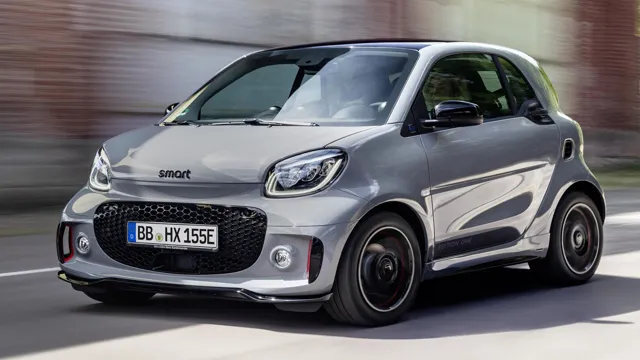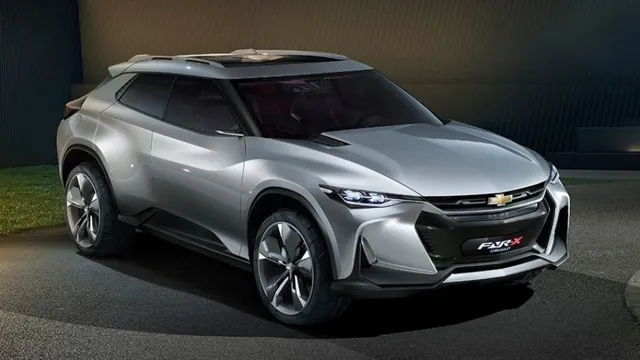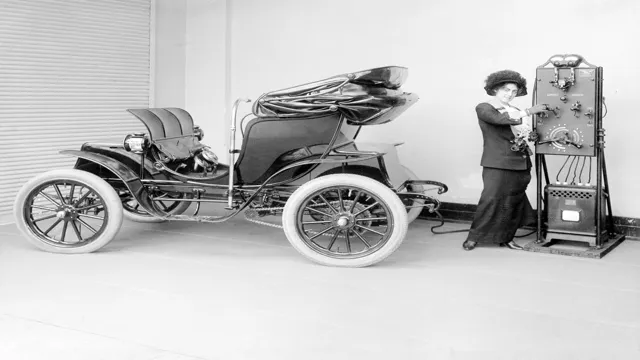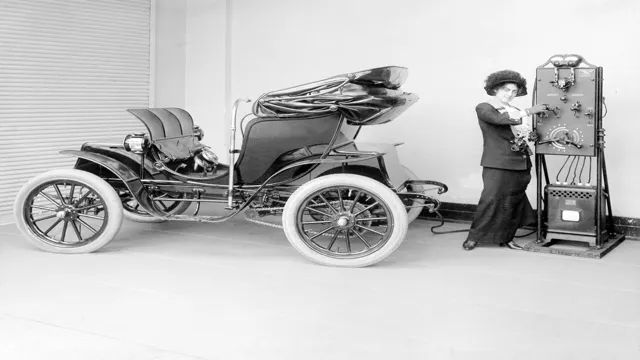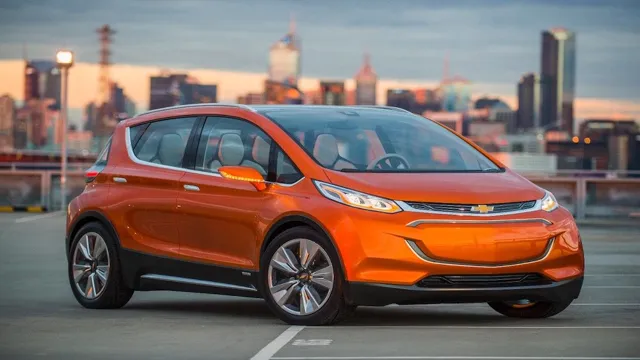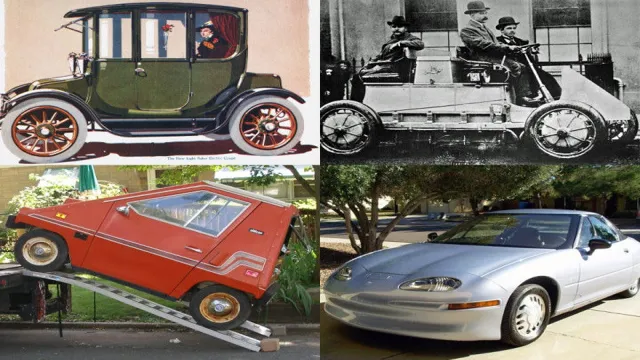The Revolutionary Rise of Smart Car Electric: A Historical Journey Toward Sustainable Future
If you’re looking for an eco-friendly mode of transportation, Smart Cars Electric might be exactly what you need. Smart Cars have been popular in the European market since the early 2000s, but what about their electric versions? Smart Cars Electric first hit the U.S.
market in 2013, but their history dates back much further. Did you know that the idea for Smart Cars originated in the late 1980s? Swatch, the Swiss watch company, collaborated with Mercedes-Benz on the design and production of a new type of car that would be small, easy to park, and affordable. After a few bumps in the road, the first generation of Smart Cars was introduced in 1998 and quickly gained popularity in Europe.
Fast forward nearly a decade, and Smart Cars Electric burst onto the scene in 200 These electric cars boasted zero emissions and lower fuel costs, making them the perfect choice for environmentally-conscious individuals. However, they were only available in select markets, and the technology was not yet mature enough for widespread use.
It wasn’t until 2013 that Smart Cars Electric were made available in the United States. The second generation of Smart Cars Electric featured improved battery life and overall performance, making them a viable option for daily driving. Since then, Smart Cars Electric have continued to evolve, with newer models featuring enhanced technology and charging capabilities.
Today, Smart Cars Electric serve as a beacon for environmentally-friendly transportation, offering a unique and efficient way to get around town while reducing your carbon footprint. So, if you’re in the market for a vehicle that’s compact, economical, and eco-friendly, it might be time to consider a Smart Car Electric.
Early Days
The history of the smart car electric is a fascinating one indeed. In the early days, when the concept of an electric car was still in its infancy, the smart car electric was one of the pioneers in the industry. The first smart car electric was introduced back in 2007, and it quickly gained popularity for its compact size and impressive fuel efficiency.
However, it wasn’t until the release of the smart fortwo electric drive in 2012 that the electric smart car truly gained traction. This new model boasted a more powerful electric motor and a longer range, making it a more practical option for drivers looking to make the switch to an electric vehicle. Today, the smart car electric continues to evolve, with new models and features being introduced on a regular basis.
With its combination of eco-friendliness, affordability, and convenience, the smart car electric is sure to remain a popular choice for years to come.
Development in the 70s and 80s
In the early days of the 70s and 80s, the world of technology was still in its infancy. Computers were bulky, slow, and limited to performing basic operations. However, this did not deter the early pioneers of the industry from pushing the boundaries of what was possible.
Programming languages such as FORTRAN and BASIC were developed, allowing programmers to create more complex software programs. The first personal computers were also introduced, including the Apple II and the Commodore PET, which were geared towards the home market. As the decade progressed, advancements in hardware and software led to the development of more powerful computers, such as the IBM PC and the Macintosh.
These advancements paved the way for the growth of the software industry, which today is one of the most lucrative industries globally. Despite the limitations of the technology back then, the early days of the 70s and 80s laid the foundation for the modern technological age we currently enjoy.
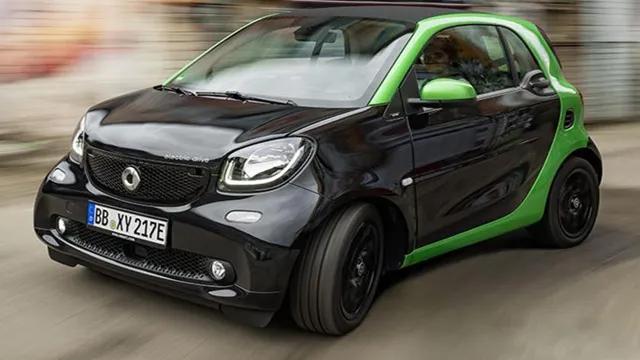
Smart Car’s Founding and First Electric Models
Smart Car’s journey began in 1994 when Mercedes-Benz and SMH (Swiss watchmaker) collaborated to create a new kind of car. In 1998, they unveiled the first Smart Car, the Smart City Coupé, which quickly gained popularity as an urban car due to its compact design and eco-friendliness. The car quickly became a status symbol and made its way into global markets.
Smart Car’s first electric model was the Smart Fortwo Electric Drive, which was launched in 200 This car was known for its zero-emission and fuel-free performance, making it an attractive option for those looking to reduce their carbon footprint. With a driving range of 84 miles on a single charge, it proved to be a practical choice for many urban commuters.
The Smart Fortwo Electric Drive was a significant milestone for the company as it made Smart Car the first car manufacturer to sell a production-ready, all-electric car. This move reflected the company’s mission to produce eco-friendly, sustainable cars that meet the needs of the modern urban consumer.
Recent Advances and Innovations
Smart cars have come a long way, with electric vehicles playing an increasingly prominent role in their history. Recent advances and innovations in smart car technology have allowed for even greater levels of efficiency and sustainability. For example, many electric vehicles now come equipped with advanced battery management systems that allow for more precise monitoring and control of power usage.
Additionally, smart car manufacturers have developed innovative charging solutions, including wireless and fast-charging options, that make it easier and more convenient for drivers to power up their vehicles. As the demand for smart, sustainable transportation continues to grow, we can expect to see even more exciting advances in the world of electric smart cars.
Smart EQ Fortwo: An Overview
The Smart EQ Fortwo is one of the latest additions to the world of electric cars. This innovative vehicle is designed with the latest advancements in technology and features that make it stand out from the competition. Its compact size makes it ideal for drivers who need to navigate through busy city streets and park in tight spaces.
Moreover, its eco-friendly features make it a top choice for environmentally conscious consumers. The Smart EQ Fortwo has a range of up to 58 miles on a single charge, and it can recharge up to 80% in less than 40 minutes. This electric car is powered by a 1
6-kWh lithium-ion battery and a 60-kW electric motor, which together provide a smooth and quiet ride. Additionally, the car features a range of safety and convenience features such as rear parking sensors, a rearview camera, LED headlights and taillights, and much more. The Smart EQ Fortwo is the epitome of innovation and style, offering drivers an eco-friendly and economical way to hit the road without sacrificing style or comfort.
Battery Technology and Range
Battery technology has come a long way in recent years and with it, the range of electric vehicles has significantly increased. Advances in battery chemistry and the use of new materials have made it possible to create more powerful and efficient batteries. For instance, lithium-ion batteries have been the preferred choice for electric vehicles due to their high energy density, reliability, and long lifespan.
However, new innovation in battery technology is pushing the limits of what is possible. Solid-state batteries are becoming a hot topic in the industry due to their increased energy density and safety. What’s more, researchers are exploring the use of different materials, such as graphene, to create even more efficient batteries that can charge faster and store more energy.
As battery technology improves, it is expected that the range of electric vehicles will continue to increase, enabling longer journeys with fewer recharging stops. This advancement in battery technology has the potential to revolutionize the automotive industry and reduce our reliance on fossil fuels.
Smart Charging Infrastructure
Smart Charging Infrastructure has come a long way in recent years, with tech advancements and innovative solutions. One such innovation is the use of Vehicle-to-Grid (V2G) technology, which enables electric vehicles to act as energy storage units, providing power to the grid during peak demand periods. Furthermore, the integration of Artificial Intelligence (AI) in charging infrastructure has allowed for efficient usage of electricity, reducing the strain on the grid.
Wireless charging technologies have also been developed, with researchers working on creating electric roads that can charge vehicles while in motion. These advances have greatly improved the usability and accessibility of electric vehicles while reducing the reliance on non-renewable energy sources, which will have a positive impact on the environment. Smart Charging Infrastructure is undoubtedly the way forward, and with continued innovation, we can expect even more significant developments.
Impact on Environment and Sustainability
Smart car electric history has had a significant impact on the environment and sustainability. Before the introduction of smart electric cars, most vehicles were heavily reliant on non-renewable sources of energy such as petroleum and diesel, leading to alarming environmental pollution and greenhouse gas emissions. With the advent of smart cars powered by electric batteries, the impact on the environment has significantly reduced.
These cars produce fewer greenhouse gases, and they are less of a threat to the atmosphere. Besides, smart electric cars are more energy-efficient than traditional cars as they recycle energy during braking. They also require less maintenance compared to petrol engines, leading to fewer emissions.
Additionally, smart car electric history has led to sustainable development in the automotive industry. There has been a shift towards the use of renewable energy sources, such as wind and solar, to generate electricity, which powers smart electric cars. This has had an immense impact on the environment as renewable energy sources have zero emissions, leading to sustainable and cleaner energy production.
Reduction in Carbon Emissions
The continued rise in carbon emissions has become a major concern in recent years due to its impact on the environment and sustainability. However, reducing carbon emissions has significant benefits that can improve the quality of our daily lives. This can be achieved through the reduction of greenhouse gases in the atmosphere, which can help slow down the rate of climate change.
Cutting down on carbon emissions can also lead to an increase in air and water quality, reducing the risks of major health concerns such as asthma and heart diseases. Through sustainable practices such as alternative energy sources and sustainable transportation, we can significantly reduce our carbon footprint and become more environmentally conscious. By doing so, we can create a healthier and more sustainable future for the planet and ourselves.
Sustainability Initiatives by Smart Car
Smart Car, sustainability, environment, initiatives, impact Sustainability is one of the core values of Smart Car, and the company strives to implement environmentally-friendly initiatives across the board. From the manufacturing process to the end-of-life disposal of their vehicles, Smart Car is constantly looking for ways to reduce their impact on the environment. For instance, the brand is currently developing electric versions of their popular models to produce an even more eco-friendly alternative.
Additionally, they use recyclable materials such as raw wool and recycled plastics in their car interiors. Not only does this help to reduce waste, but it also creates a unique and modern design aesthetic. Overall, Smart Car’s sustainability initiatives have had a positive impact on the environment and demonstrate the company’s commitment to reducing their carbon footprint.
Future Projections and Trends
Smart cars have come a long way since their inception in the 1980s. When delving into the history of electric cars, it’s important to note that while the idea of a smart car had been around for years, it wasn’t until the development of new and improved electric car technology that the concept truly took off. With electric cars, smart cars can drive longer distances on a single charge and provide greater energy efficiency overall.
Electric car technology has also made it possible for smart cars to be more affordable, making them more accessible to the mass market. Looking to the future, there’s no doubt that smart cars will continue to evolve and improve as advancements in technology are made. This will likely lead to even greater energy efficiency, increased safety features, and improved overall performance.
With the ever-growing demand for eco-friendly vehicles, electric smart cars are sure to be in high demand for years to come.
Conclusion
From humble beginnings as a quirky compact car, the smart car has evolved into a trailblazing symbol of innovative electric technology. It’s no longer just a nimble urban vehicle – it’s a smart investment in sustainability. With the smart fortwo electric drive leading the charge, the future of transportation is looking smarter and more efficient than ever before.
It’s time to make the smart choice and join the electric revolution.”
FAQs
What is a smart electric car?
A smart electric car is a vehicle that is powered by an electric motor and runs on a battery instead of gasoline.
When were smart electric cars first introduced?
Smart electric cars were first introduced in 2007.
What is the history behind smart electric cars?
Smart electric cars were developed as a response to the increasing demand for eco-friendly vehicles that emit less pollution and consume fewer resources.
How does a smart electric car work?
A smart electric car works by using an electric motor that is powered by a battery. The battery can be charged from a regular electrical outlet, and the car can travel for a certain distance on a single charge.
